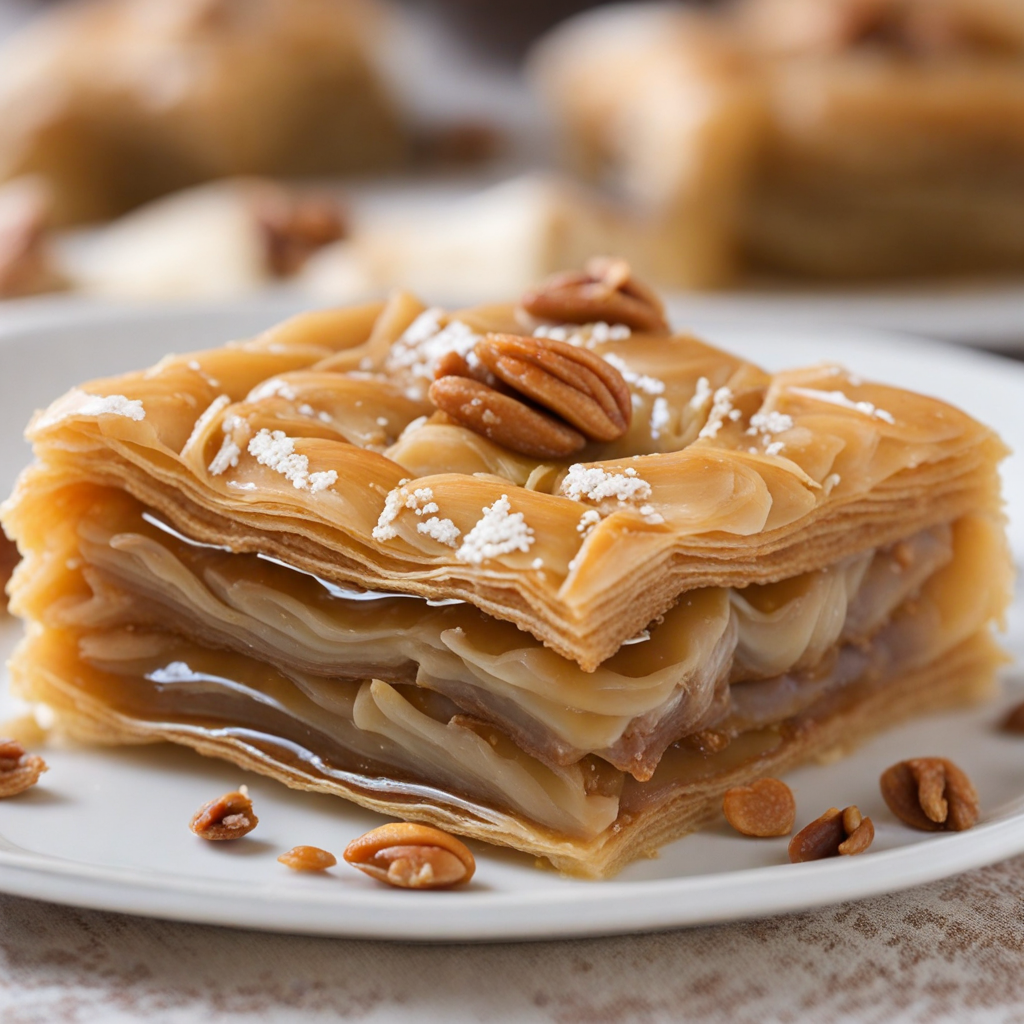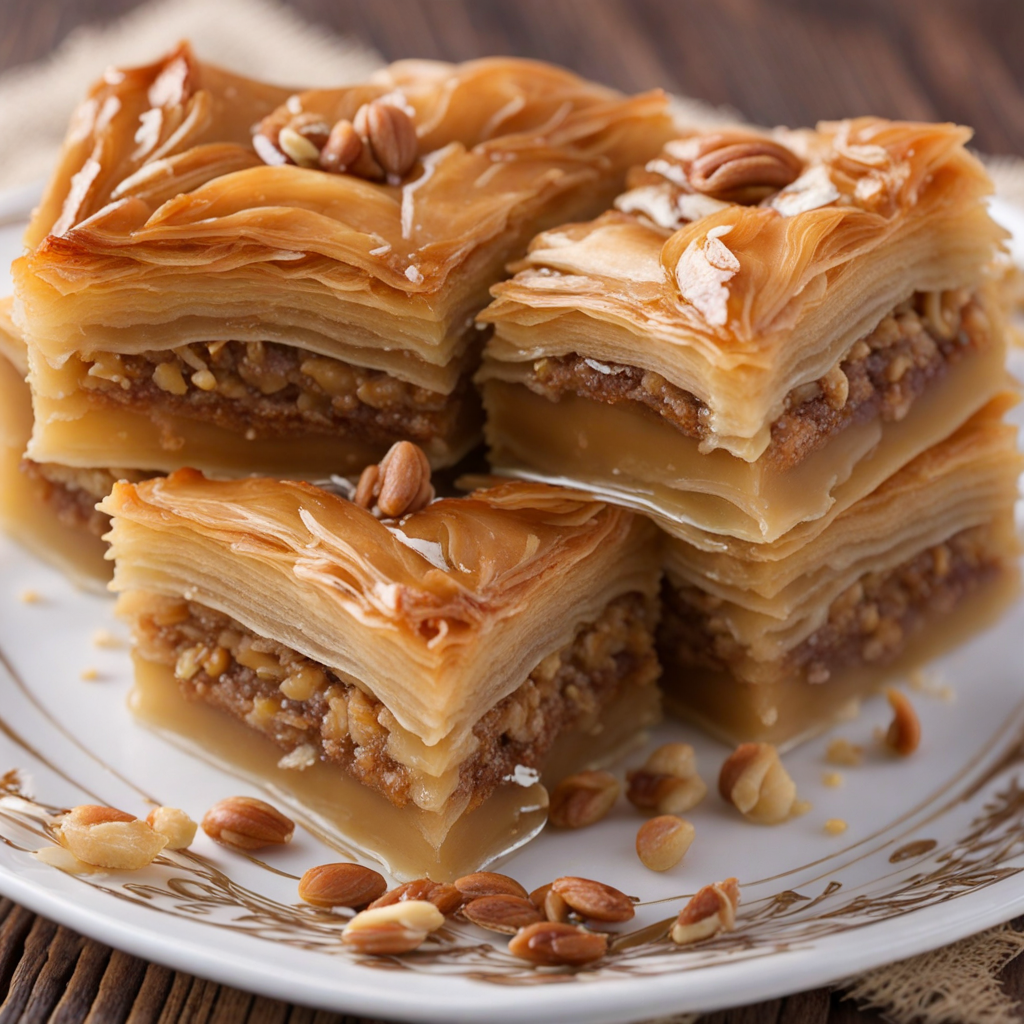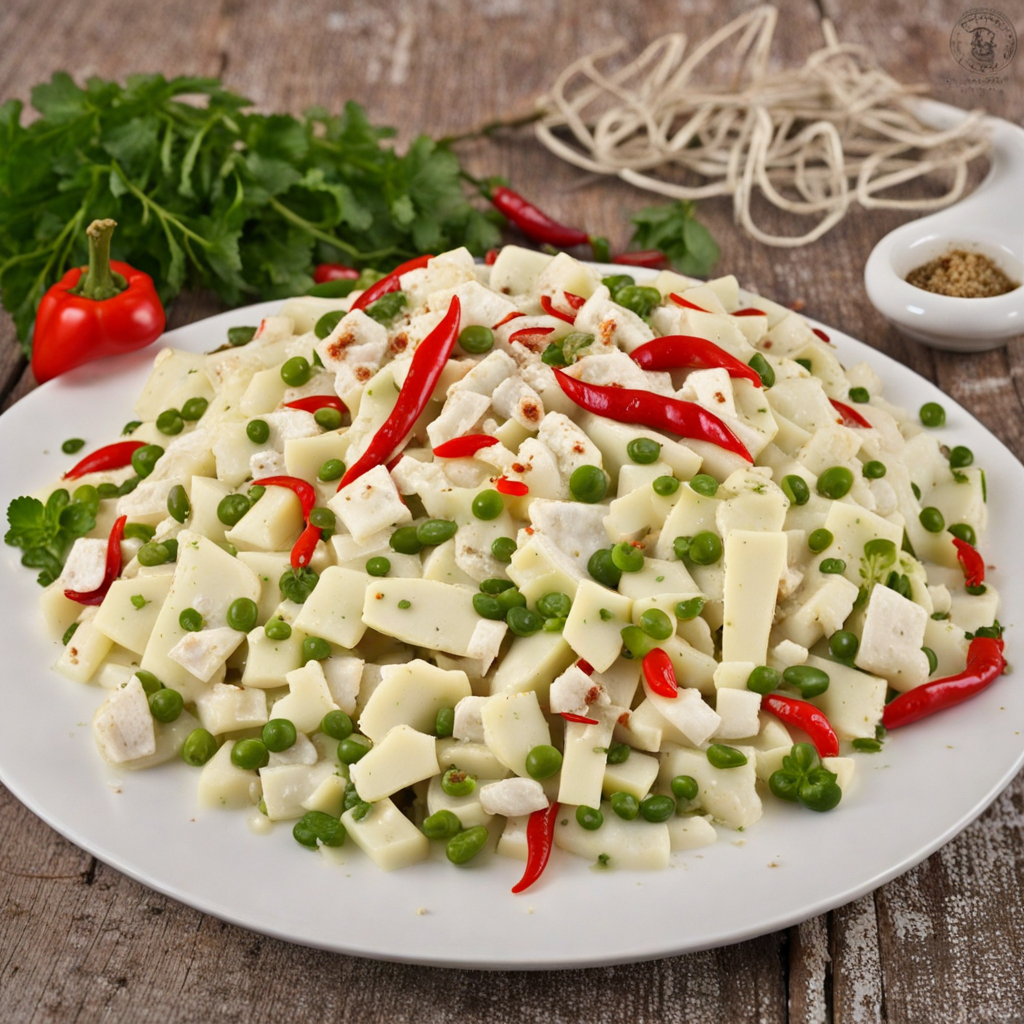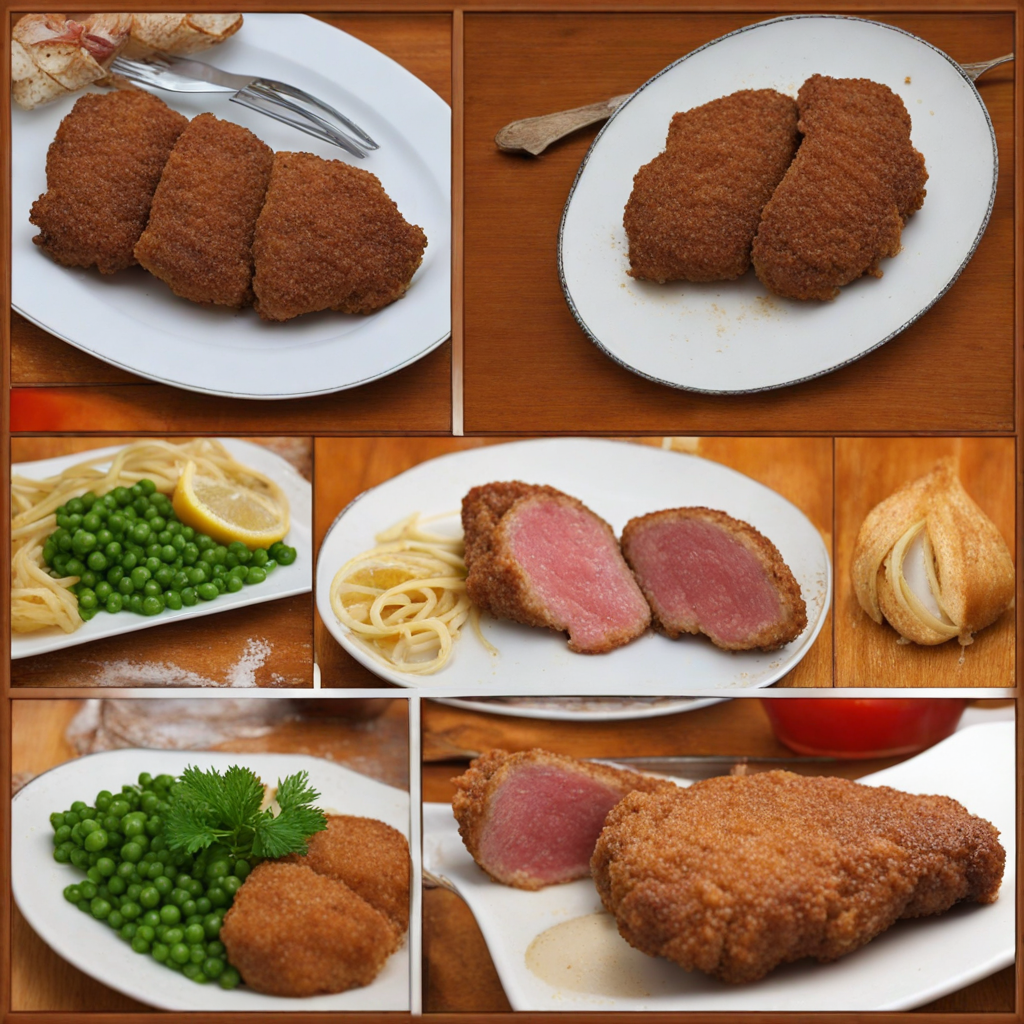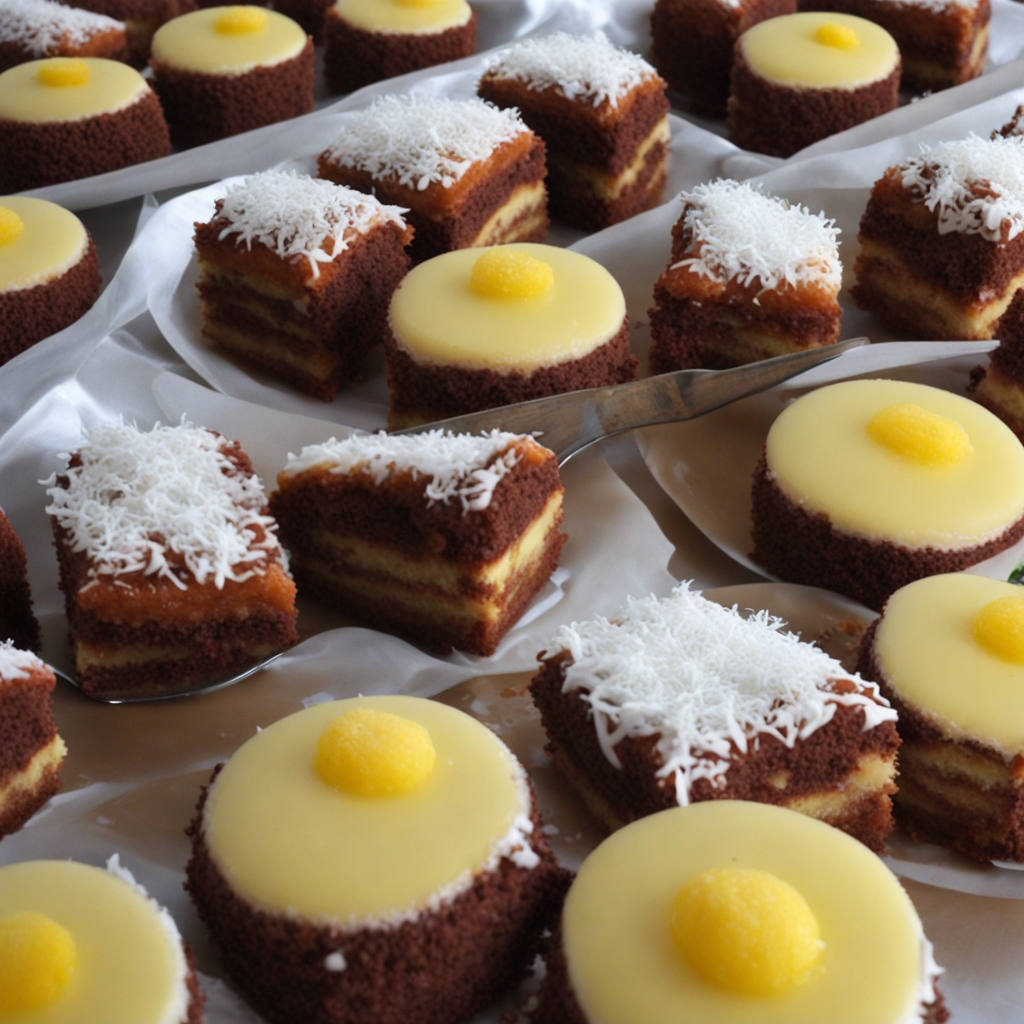Baklava
Baklava is a delightful pastry that embodies the essence of Serbian desserts, characterized by its rich layers of flaky phyllo dough, finely chopped nuts, and a sweet syrup that perfectly balances the flavors. The process of making baklava involves meticulously layering sheets of dough, often brushed with melted butter, and interspersing them with a mixture of walnuts or pistachios, creating a luxurious texture that is both crispy and tender. The result is a multi-layered treat that offers a delightful crunch with every bite, inviting you to savor its intricate construction. Once baked to a golden perfection, baklava is drenched in a fragrant syrup made from sugar, water, and sometimes a hint of honey or citrus, which seeps into the layers, enhancing the nutty flavor and adding a glossy finish. The syrup not only sweetens the pastry but also contributes a moistness that is essential to the baklava's overall appeal. In Serbia, baklava may be flavored with spices such as cinnamon or cloves, giving it a unique twist that reflects the local palate and culinary traditions. This traditional dessert is often served in small diamond or square-shaped pieces, making it an ideal treat for sharing during festive occasions or family gatherings. Each bite of Serbian baklava offers a symphony of textures and flavors, from the crispiness of the phyllo to the chewiness of the syrup-soaked nuts. It's a dessert that captivates not just with its taste, but also with its rich history and cultural significance, making it a must-try for anyone eager to explore the diverse world of Serbian cuisine.
How It Became This Dish
The Sweet History of Baklava: A Serbian Delight Baklava is a sweet pastry that has captured the hearts and palates of many across the globe, but its roots delve deep into the cultural tapestry of the Balkans, including Serbia. This flaky confection, layered with nuts and sweetened with syrup or honey, has a rich history that intertwines with the culinary traditions of various civilizations, evolving over centuries to become a beloved treat in Serbian kitchens and beyond. #### Origins: A Crossroads of Cultures The exact origins of baklava are a subject of debate, with many claiming it to be a gift from the ancient Assyrians around 800 BC, who are believed to have layered dough and nuts together, drenching it in honey. However, the modern iteration of baklava as we know it today likely emerged from the kitchens of the Ottoman Empire. During the empire's expansion into the Balkans, the culinary practices of diverse cultures began to intermingle, creating a rich tapestry of flavors and techniques. The term "baklava" itself is thought to have Turkish roots, but the pastry is also linked to Greek, Arab, and Persian cuisines. As the Ottomans settled in the regions that are now Serbia, they brought with them their culinary traditions, including the art of making baklava. The Serbians adapted this dish, incorporating local ingredients and flavors, making it a staple during festivals, celebrations, and communal gatherings. #### Cultural Significance: More Than Just a Dessert In Serbia, baklava is not merely a dessert; it is a symbol of hospitality and celebration. Traditionally prepared for special occasions such as weddings, religious holidays, and family gatherings, baklava embodies the spirit of sharing and generosity. Its intricate preparation is often a communal activity, bringing friends and family together in the kitchen, passing down recipes and techniques through generations. The layers of baklava, made from delicate phyllo dough, represent the many layers of Serbian culture and history. Each bite is a reminder of Serbia's rich heritage, influenced by the myriad of peoples who have passed through the region over the centuries. The use of local nuts, such as walnuts and pistachios, reflects the country’s agricultural bounty, while the sweet syrup often flavored with rosewater or lemon adds a touch of tradition that resonates with the local palate. During celebrations, baklava is often served alongside other traditional sweets, showcasing the country’s culinary diversity. It is common to find baklava in homes during Slava, a Serbian Orthodox celebration honoring a family's patron saint, where it serves as both a dessert and a symbol of abundance. #### The Evolution of Baklava in Serbia As Serbia navigated the complexities of history, including periods of Ottoman rule and later, the formation of the Kingdom of Serbs, Croats, and Slovenes, baklava evolved alongside the nation. The influences of neighboring cultures, such as Hungarian and Austrian, further enriched its development. In the 19th century, as Serbia began to assert its national identity, culinary traditions, including baklava, were revisited and refined. The emergence of Serbian cookbooks and the documentation of traditional recipes played a crucial role in preserving baklava's legacy. Home cooks began to experiment, adding personal touches such as different nuts, spices, and variations in the syrup, which contributed to the diversity of baklava found across the country today. In the 20th century, with the advent of globalization, baklava transcended its regional boundaries. It became increasingly popular in Western Europe and North America, introduced to new audiences through diaspora communities. Serbian baklava, while retaining its unique identity, began to be appreciated alongside other regional variations, leading to a greater understanding and appreciation of Balkan cuisines. #### Modern-Day Baklava: A Culinary Renaissance Today, baklava holds a prominent place in Serbian cuisine, often found in bakeries and restaurants, as well as in homes. The preparation of baklava has also embraced modern culinary techniques, with some chefs experimenting with flavors and presentations, incorporating ingredients like chocolate or exotic spices. Despite these innovations, the traditional method of layering phyllo dough, nuts, and syrup remains a cherished practice. Culinary festivals celebrating Serbian heritage have further popularized baklava, elevating it from a simple dessert to a cultural emblem. Chefs and home cooks alike take pride in their recipes, often competing to create the most exquisite version of this beloved pastry. The presence of baklava in Serbia today is not just about enjoying a sweet treat; it is also about honoring the country’s culinary history and the stories woven into each layer. #### Conclusion: The Sweet Legacy Continues Baklava is more than just a dessert in Serbia; it is a testament to the country’s rich cultural heritage and a symbol of community and celebration. The layers of phyllo, the crunch of nuts, and the sweet syrup intertwine to tell a story that spans centuries, reflecting the influences of various cultures that have left their mark on Serbia. As baklava continues to evolve in modern Serbian kitchens, it remains a cherished dish that connects generations, celebrating the country’s past while adapting to contemporary tastes. Its delightfully sweet flavor and intricate preparation ensure that baklava will forever hold a significant place in the hearts and homes of Serbians, embodying a legacy that is both delicious and meaningful.
You may like
Discover local flavors from Serbia


